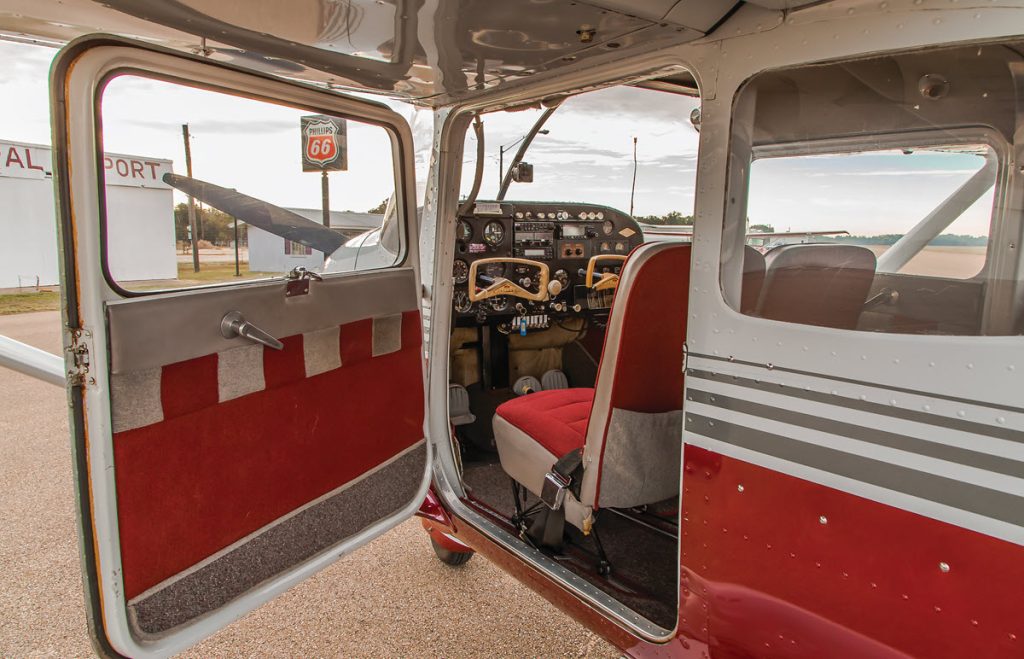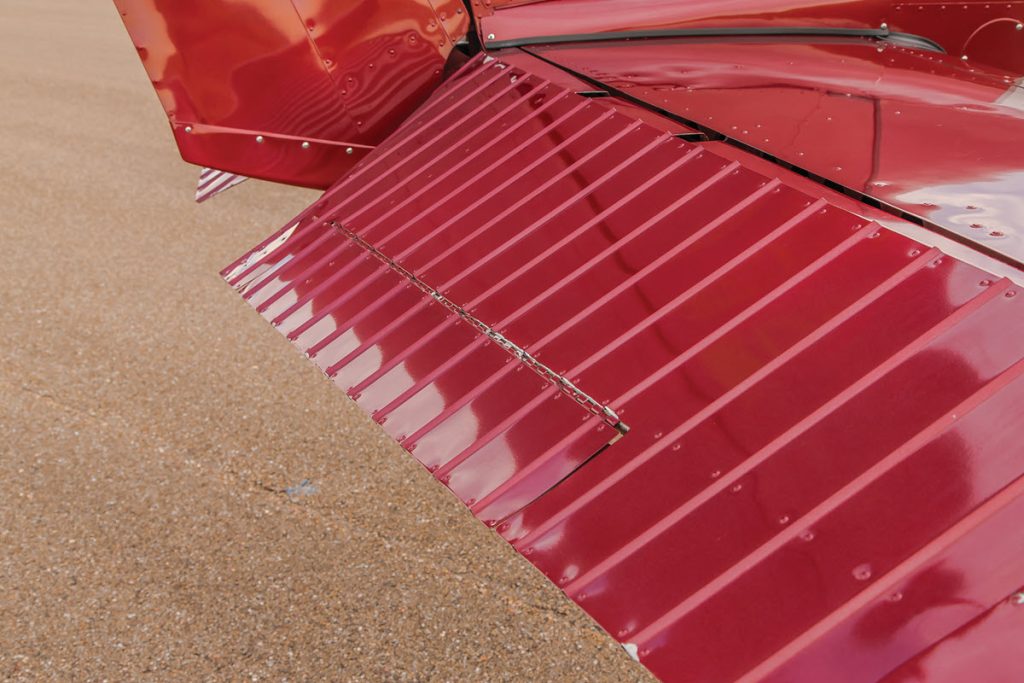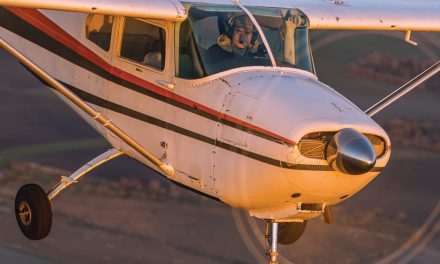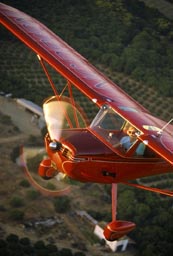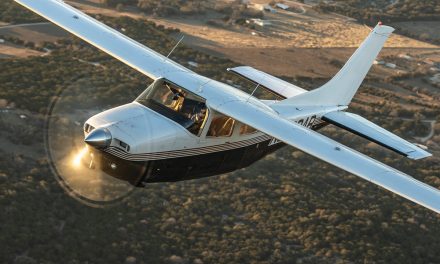
By Bill Cox
In honor of Bill Cox, we are running one of his previous articles from March of 2009
I almost expected the tachometer to jump out of the panel and land in my lap. Too many years of watching tachometers redlined at 2500 to 2800 rpm had conditioned me to assume any higher indication was obviously the work of the devil or the result of a runaway prop.
Indeed, the last time I’d seen 3200 rpm in an airplane was in a Twin Comanche in tight photo formation when the airplane’s right prop governor malfunctioned and the prop went screaming past the limit. In this case, I was flying Jack Purdue’s fully restored Cessna 175 Skylark out of Jackson, California, and there was no cause for concern. The engine was running fine, and the noise level was no higher than I might have expected in a garden-variety Cessna.
That engine was a Continental GO-300C, turning 3200 rpm, but spooled down to a more sedate 2400 propellor rpm by a .75 reduction gear. Owners of older 172s may recognize the engine designation as similar to that of the Skyhawk’s original 145 hp Continental. The gearing allowed the Skylark’s engine to develop 175 hp at 3200 rpm, thus the model designation.
Still, 3200 rpm seemed all wrong from a pilot’s perspective. Purdue notes the interesting difference in reaction between pilots and non-pilots: “Pilots are sometimes uncomfortable or even downright concerned about the high engine rpm. Non-pilots used to seeing 4000 or even 6000 rpm on their automotive tachs don’t even give 3200 a second thought.”
The Skylark was Cessna’s attempt to inject more power into a Skyhawk airframe and wing without adding significant weight. Cessna reasoned a geared engine was a logical method of increasing thrust that wouldn’t demand a third blade, increasing prop diameter or turning the existing prop faster.

The math is inescapable. Turn a standard 76-inch prop at 2800 rpm on an airplane at rest on the ramp, and the tip speed is a rapid 550 knots or about Mach .83 (at sea level). Just as the engines on supersonic jet fighters must slow inlet air to well below the speed of sound to use it, propellors have progressively more difficulty dealing with air moving at anything over about Mach .86. Even at reduced Mach numbers, the tips are moving much too fast to generate any significant thrust, though the more critical inboard sections of the blades turning at slower speeds are progressively more efficient.
Cessna produced Skylarks relatively unchanged through 1960 and delivered almost 1,800 units in the first three years of production. After that, it was all downhill for the geared Skyhawk. The geared engine gained a perhaps undeserved reputation as problematic. TBO was only 1200 hours compared to 1800 hours on the non-geared Continental that powered the standard 172, and prospective buyers began to question whether the geared airplane offered enough advantages to offset its reduced reliability.
In 1961, Cessna added a constant speed prop and cowl flaps to try to shore up sales, but demand continued to wind down. Finally, in 1962, the company changed the name to the 172 Powermatic in a last attempt to disassociate the airplane from the Skylark, but it was too late. The Wichita company built only a little over 100 model 175s that year. Cessna quietly retired the model altogether in 1963 after a total of 2,119 Skylarks/Powermatics had been produced.
Jack Purdue’s Skylark is a 1960 model 175A, built halfway through the airplane’s five-year production run and blessed with the “modern” swept tail bestowed on all Cessna singles that year, plus an improved, streamlined cowling. Purdue’s Skylark was one of the last to fly behind the simple, fixed-pitch, McCauley prop.
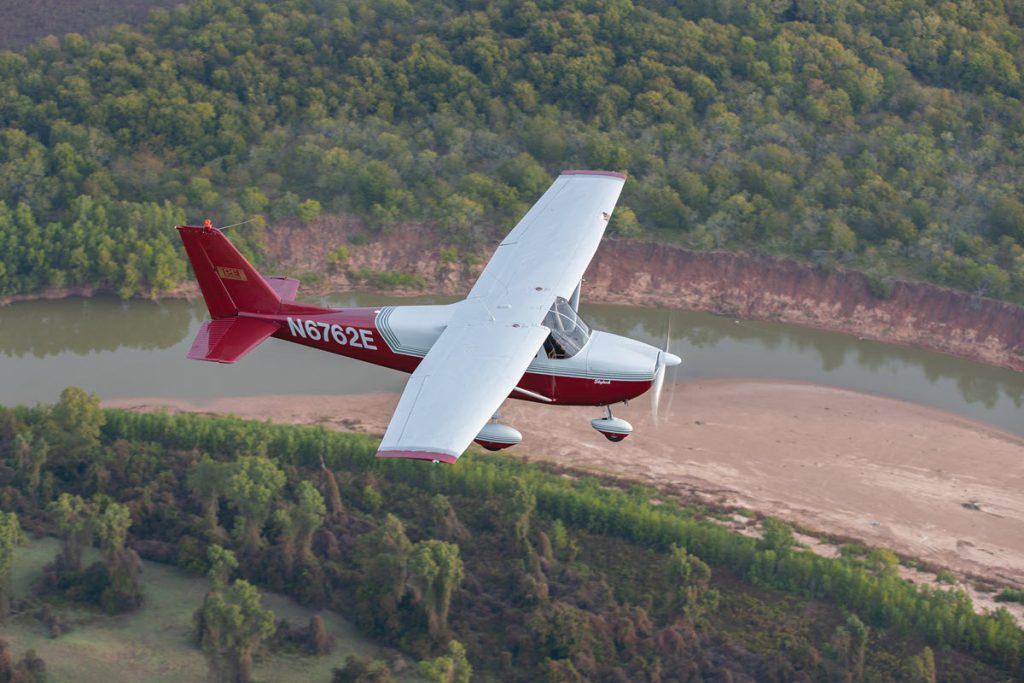
Sitting on the ramp, it’s hard to distinguish the Skylark’s basic shape from that of a standard ‘Hawk. One dead giveaway is the bump at top center cowling. Reduction gearing is mounted on top of the engine and produces a pronounced hump in the middle. The higher thrust line allows the Skylark to mount an 84-inch McCauley prop in place of the Skyhawk’s 76-inch blades and still preserve nearly the same 21-inch ground clearance.
Purdue has become something of a student of the type, with an impressive library of material on the airplane’s design and execution. “I’m convinced it was a better design than Cessna thought,” he says. “The 175’s maintenance problems were primarily a result of pilots who refused to run the airplane by the book rather than any inherent mechanical problem.
“The geared engine was intended to be run at 3200 for takeoff and as high as 3000 rpm for cruise,” Purdue explains. “The cruise setting is equal to about 2250 prop rpm, but pilots insisted on running it slower because of their own preconceptions that engines ‘shouldn’t be run that fast’. Naturally, performance suffered at the lower power, cooling was poor at the reduced speed, and that led to many of the mechanical problems. Cessna might have solved the problem by simply routing the tach to display prop rpm rather than engine rpm, but that may have caused certification questions.”
What Makes It Special
For pilots willing to fly the airplane by the book, the Skylark did offer a few notable advantages over the standard Skyhawk. One common complaint against the Skyhawk was that, despite Cessna’s famous high-lift wing, the model’s climb was fairly anemic with a full load. The POH called for 660 fpm at sea level on the early 172s, but many pilots agree that may have been more than a little optimistic. Cessna knew the ‘Hawk would rarely be called on to lift four folks, and 650 to 700 fpm was well within reach with only two up and normal conditions.
By contrast, the Skylark logged an easy 850 fpm, granting it reasonable off and up performance with a 2+2 full house. Reduce the load to a more typical two pilots in the front cockpit, and you could record a consistent 900 fpm from sea level. Purdue reports he’s seen an occasional 1000 fpm from his airplane, all the more impressive since his airport is located 1,300 feet above sea level in the Eastern foothills of the Sierra Nevada. Service ceiling also improves from the Skyhawk’s 13,300 feet to 17,800 feet on the Skylark, another valuable benefit when operating in the medium high country.
Cruise was equally generous in the Skylark. Typical 172 cruise numbers in the early ‘60s were about 113 knots under optimum conditions at 8,000 feet. Purdue’s airplane trued more like 122 knots between 6,000 and 8,000 feet with the power set for a maximum 3000 rpm (75%). So while the Skylark doesn’t exactly blister the sky, it doesn’t do too shabby for a piston single with fixed gear, a fixed-pitch prop and struts hanging in the wind.
The bad news was that fuel burn increased commensurate with horsepower and fuel capacity didn’t – two factors that conspired to limit range and endurance. The 175 was fitted with the same 43-gallon tanks mounted on the Skyhawk, and at 10.5 gph, that meant you needed to be looking for an airport after only about 2.8 hours of travel to avoid burning into your reserve. That’s not exactly outstanding endurance.
Purdue counters; “Things weren’t really that bad on either airplane. Actual capacity was 52 gallons, but usable was limited to 43 gallons, apparently because of the location of the fuel pickup, right in the middle of the tank. This meant any major attitude change with fairly low fuel could unport the pickup and induce a power loss. If you flew the airplane within reasonable pitch and bank limits and stayed coordinated, you could easily get four hours out of it and still have a decent reserve.”
Considering that weight is relatively unchanged and the fuselage and wing are identical, it’s no big surprise that the Skylark flies very much like a Skyhawk. In flying Purdue’s airplane for several hours, I couldn’t tell any difference at all between its handling and that of a 1960 Skyhawk I’d flown two days before at Fresno’s Sierra Sky Park. Performance obviously benefited from the extra 30 hp, but the airplanes felt and handled virtually identical in all modes of flight.
In contrast to what I might have expected, noise level inside the Skylark seemed, if anything, slightly quieter than in the stock Hawk, despite the higher power. That’s probably because the primary noisemaker both inside and outside most general aviation airplanes is the prop, and the Skylark’s reduction gearing lowers prop rpm to a neighborly, passenger-friendly 2400 rpm. That’s barely over Mach .70 at the tips, slow enough to minimize prop noise for everyone.
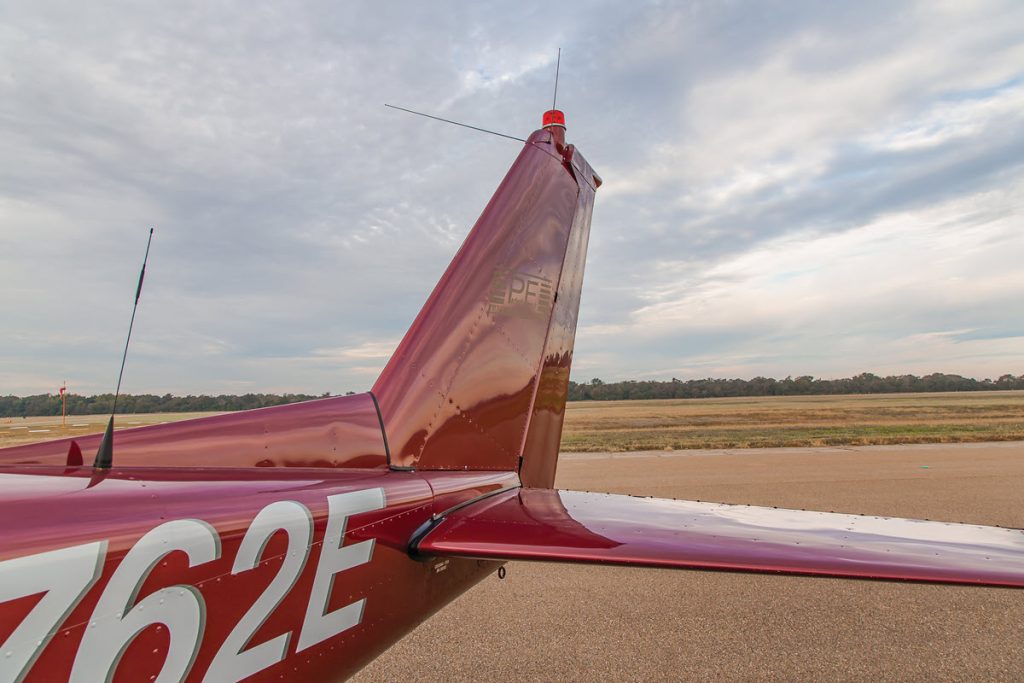
Perhaps amazingly, I once saw a Skylark flying the bush in Alaska for a Fairbanks charter company. The operator obviously had to be careful where he landed with the third wheel under the nose, but he commented that 175s have such a slow and easily predictable stall that the airplane allows a reasonably competent pilot to sneak into ridiculously short strips. The official number is less than 700 feet using standard piloting technique, but you can bet a competent bush pilot can drop below that easily. No one will ever mistake either model for a STOL bushplane, but pilots willing to fly approaches at 1.1 Vso may find they can manage more like 500 feet from touchdown to full stop.
The problem, of course, is getting back off the ground since the manual suggests you can expect to use about 50 percent more runway for takeoff. In Alaska, the saving grace is that much of the time, the airplane lands, offloads virtually everything except the pilot, doesn’t refuel and goes out light.
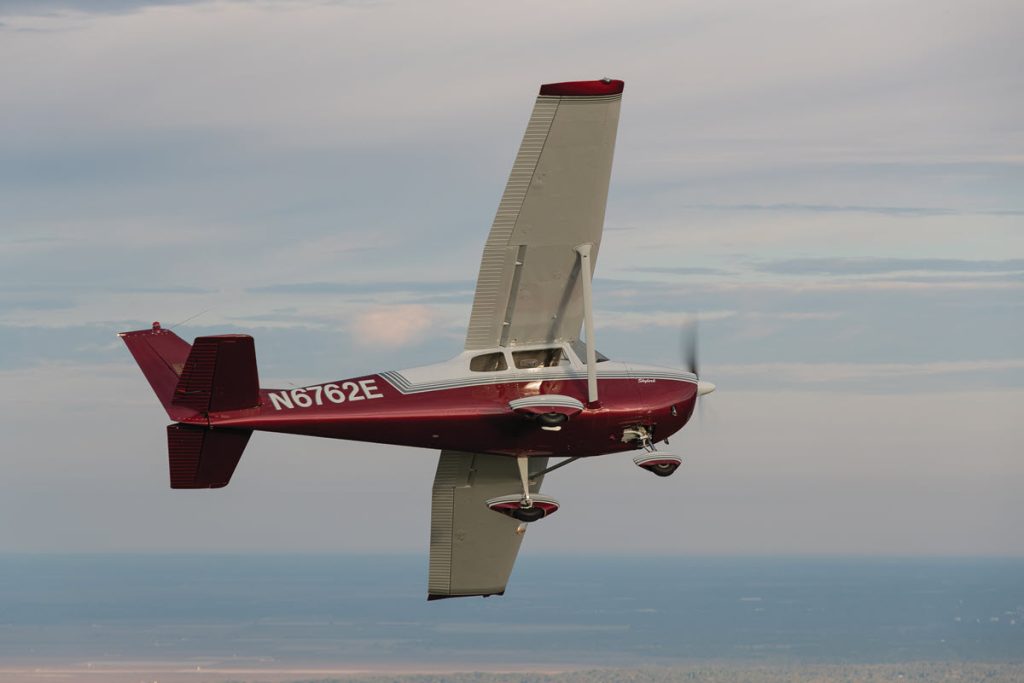
Whatever your mission, the Skylark offers just a little more punch than the Skyhawk, easily enough to make a difference if the load is heavy or the runway is short or well above sea level. Just don’t let that tachometer psych you out.
The rest of this article and the specifications and performance of the Cessna Skylark can be seen only by paid members who are logged in.Have a website login already? Log in and start reading now.
Never created a website login before? Find your Customer Number (it’s on your mailing label) and register here.
JOIN HERE
Still have questions? Contact us here.

